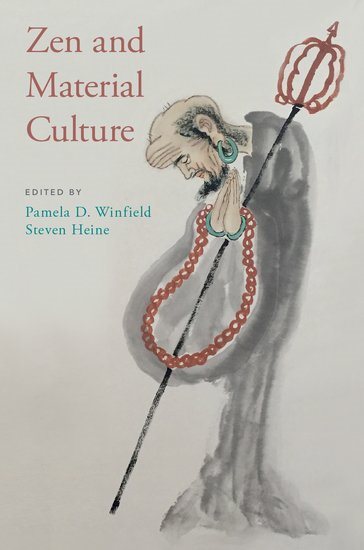Pamela D. Winfield, associate professor of religious studies, co-edited the recently published work with Steven Heine, professor of religious studies and history and director of the Asian Studies Program at Florida International University.
A new book co-edited by Elon’s Pamela Winfield seeks to challenge the perception that the practice of Zen Buddhism is confined strictly to the mind. Specifically, the volume explores how objects in the physical world play a central role in awakening. In “Zen and Material Culture,” Winfield and co-editor Steven Heine highlight the ways in which art and objects have factored into the practice of this school of Buddhism that has traditionally been known as more spiritual than physical.
 “That is part of the rhetoric,” said Winfield, an associate professor of religious studies. “But that’s just rhetoric. The reality is that there is a lot of ‘stuff’ involved in the practice of Zen. You have things that are used as teaching implements, as meditative tools.”
“That is part of the rhetoric,” said Winfield, an associate professor of religious studies. “But that’s just rhetoric. The reality is that there is a lot of ‘stuff’ involved in the practice of Zen. You have things that are used as teaching implements, as meditative tools.”
The book is the result of an extended discussion between Winfield and Heine on the role of the material world in the history and practice of Zen Buddhism. That discussion stretches back to 2004, when both co-chaired a program unit of the American Academy of Religion. Their goal was to encourage the interdisciplinary study of material culture and Japanese Zen, Winfield said.
“It’s been a lifelong intent and mission to bring art historians and religious studies scholars into the same room to talk across these two disciplines,” Winfield said. “For Zen Buddhism, we still had to encourage our colleagues to think in material terms. They are much more at home textually.” This collection follows Winfield’s earlier book, “Icons and Iconoclasm in Japanese Buddhism: Kukai and Dōgen on the Art of Enlightenment,” published by Oxford University Press in 2015.
“Zen and Material Culture” features nine chapters with Winfield and Heine offering the introduction and each individually penning a chapter. In the introduction, they write that “Zen implements, accessories, and other material objects, as well as Zen images, icons, artworks and artifacts, are all literally instrumental to the disciplinary practices of Zen monasticism. … Objects such as robes and rags, staffs and prayer beads, tea bowls and monastic buildings, temple collections and retail commodities all contribute to our construction notions of Zen religious life.”
In Winfield’s chapter, “Materializing the Zen Monastery,” she focused on the 13 century writings of Dōgen Zenji about his first monastery, Kōshōji, outside of Kyoto.
Winfield said that Dōgen’s writings addressed his lay and monastic followers as a fundraising appeal while he worked to build the new monastery. “He invokes and manipulates current Chinese material theory of the five phases of matter — earth, water, fire, wood and metal — that explain how the whole world works,” Winfield said. “He uses the physics of the day to explain all the things he needs and how the monastery is going to be built up.”
Work on the book began with the assemblage of scholars who individually were looking into how the material world factors into the history and practice of Zen Buddhism. Other chapters delve into the use of the “Zen staff” as an instructional tool, the use of prayer beads in the practice of Zen and “The Zen of Rags,” which explores the various cleaning cloths, rags, robes and wraps used daily by Zen practitioners.
Winfield said early response to the book, which was published in July by Oxford University Press, has been positive, and has generated interest from scholars. Winfield and Heine will be featured in an upcoming edition of Sacred Matters, a web magazine of scholarship on religious trends, and have been invited to deliver a joint lecture and book signing hosted by The Japan Society in New York in October.
Looking ahead, Winfield is working on a book tentatively titled “Zen and the Body: Material and Rhetorical Anatomies at The Temple of Eternal Peace” in which she plans to advance a theory of “Zen bodyfulness” that puts the physical body back into the discourse around Zen mindfulness.


